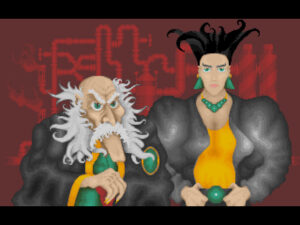Demoniak: Getting Things Together
My last post probably made Demoniak sound easier than it is. Not everything can be accomplished by switching characters. On the default-second planet, Fundamenta, your primary task is to find a hermit named, of all things, Salman Rushdie — presumably not the famous author, given that the game is set a hundred years in the future (which is to say, 2090) — to learn the whereabouts of an artifact you need. I can land my heroes on Fundamenta. I can switch control to Rushdie and exit his hermit-hole. I cannot seem to bring them together. The set of rooms that each has access to have no obvious connection. They may as well be in disjoint worlds.
And that raises an interesting point: that even when you “become” Rushdie, you don’t have access to his knowledge. Same goes for Doctor Cortex, and for the warden on Freezyassov. They all have knowledge of secrets, but the only way for the player to learn those secrets is to bring the characters into contact with the right other characters and observe the resulting automatic conversation.
Meanwhile, I’m starting to regard the anything-goes-ness as more a liability than an opportunity, a way for random combat to interfere with what you’re actually trying to do. Sometimes I’ll switch back to the heroes to discover that one of them got killed while I wasn’t looking. I don’t know who’s picking these fights, but I have suspicions about Sondra Houdini. I’m starting to think I should just get all the supernumerary guards and the like killed in advance by making them fight each other before the heroes enter the scene. But what if one of them knows something?
 Comments(0)
Comments(0)